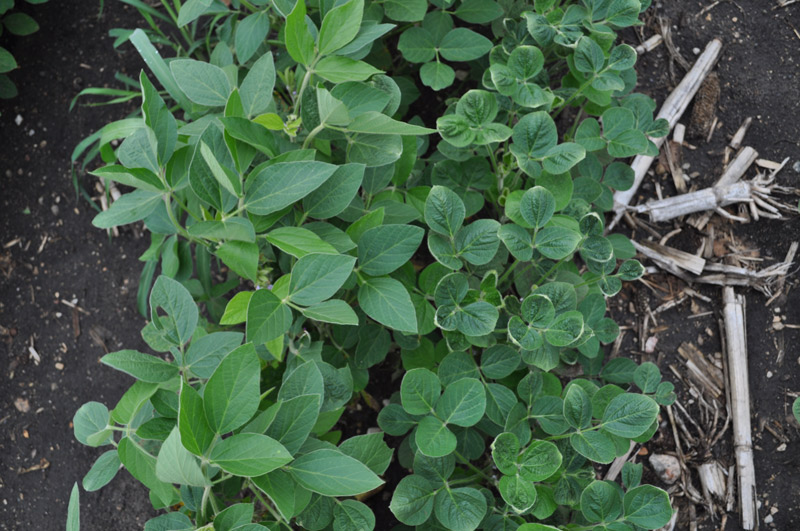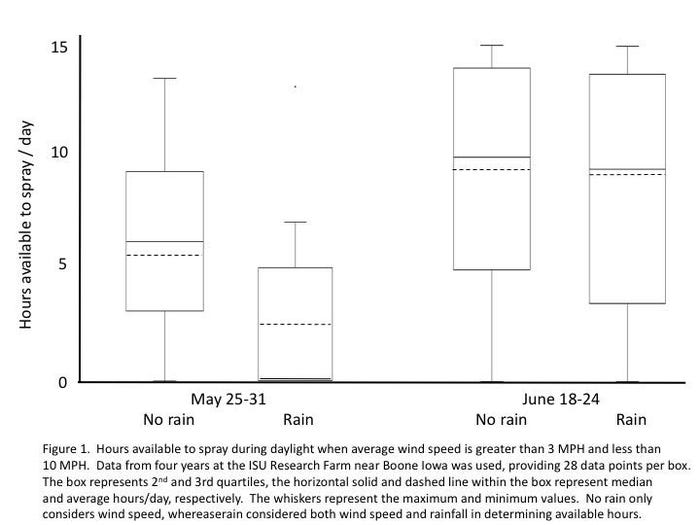October 26, 2017

By Bob Hartzler and Meaghan Anderson, Iowa State University
The EPA recently announced changes to the new dicamba labels in response to widespread off-target plant injury in 2016. The most significant change is classification of the new dicamba formulations as Restricted Use Products. Other changes will reduce the hours available to spray soybean, including 1) restricting applications to between sunrise and sunset, and 2) reducing the maximum wind speed during application from 15 mph to 10 mph. The ability to cover all acres in a timely manner has always been an issue and these new limits will add to that difficulty.
An earlier article described hours available to apply herbicides using restrictions on the first Xtendimax with Vapor Grip Technology label. In updating the article, box plots were used to display the distribution of available hours during two 7-day periods at different times in the growing season. Weather records for four different years were used, therefore providing 28 days in each analysis. Weather data from the ISU Research Farm near Boone was used.
The first bar plot of each time period shows hours with average wind speed between three and 10 mph during daylight hours (Figure 1). If there was a time frame where winds were within the allowed wind speeds for a single hour, that time was not included in the calculation. The second plot takes into consideration rainfall, subjectively determining how long the rain would keep a sprayer out of the field.
Wind speeds in Iowa are significantly higher in May than in June (Figure 1). When not considering rain, the average hours to spray was approximately five hours per day in late-May compared to nine hours in mid-June. In late-May, half of the days were totally lost for spraying based on wind and rain restrictions. As with wind, rain was a bigger factor in limiting spray hours in May than in June.

While the analysis was conducted with the new dicamba labels in mind, the graphs clearly show the pressure applicators are under to complete timely spraying of fields, regardless of herbicide. This is one of the many benefits of preemergence herbicides, spreading out the window for postemergence applications. While applications later in the season provide more hours to complete spraying, temperatures are higher, increasing the risk of volatilization of dicamba.
You May Also Like




